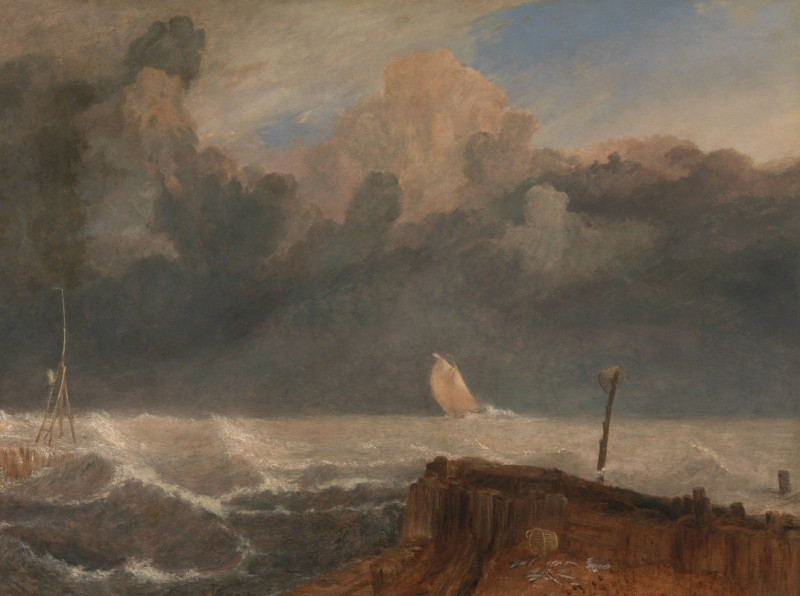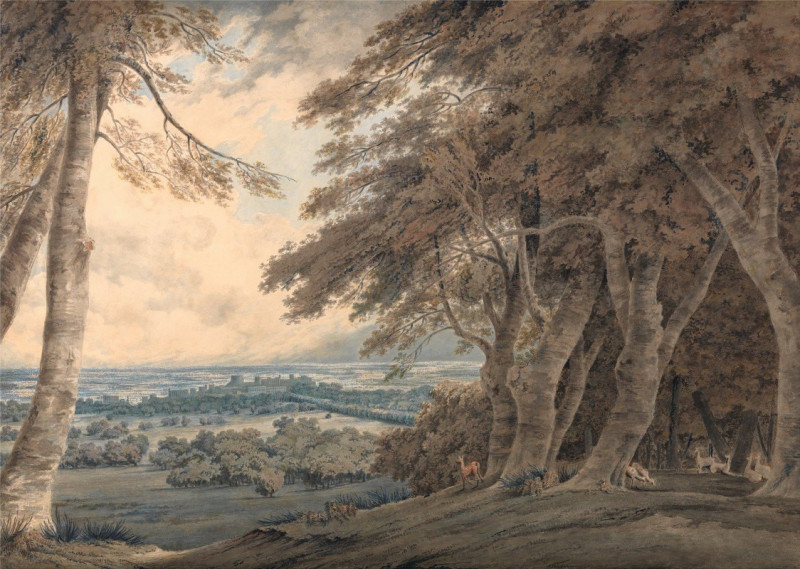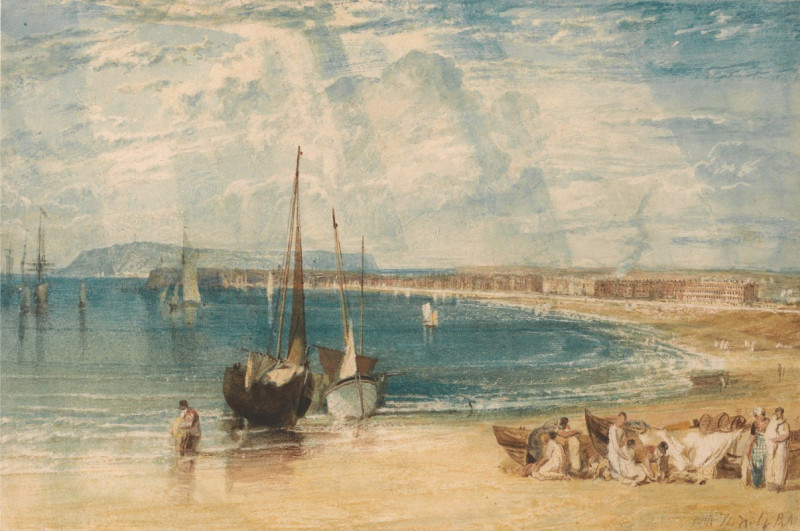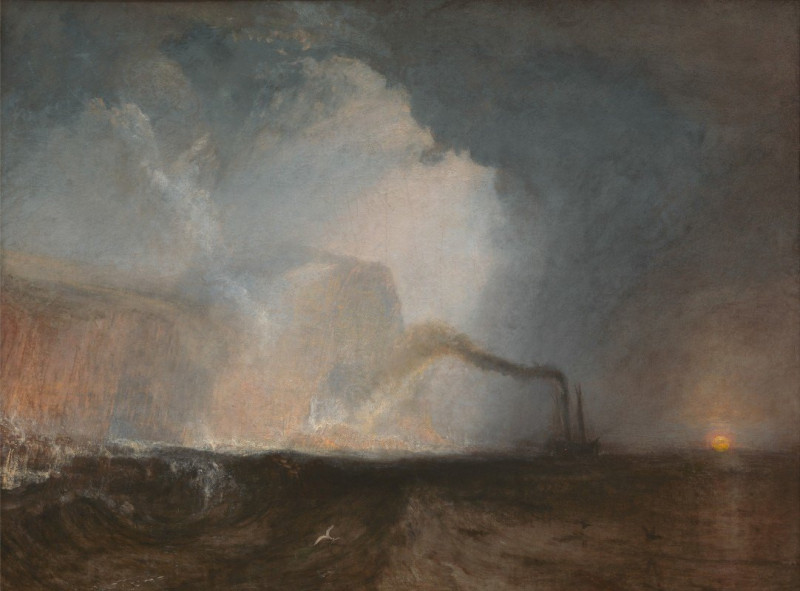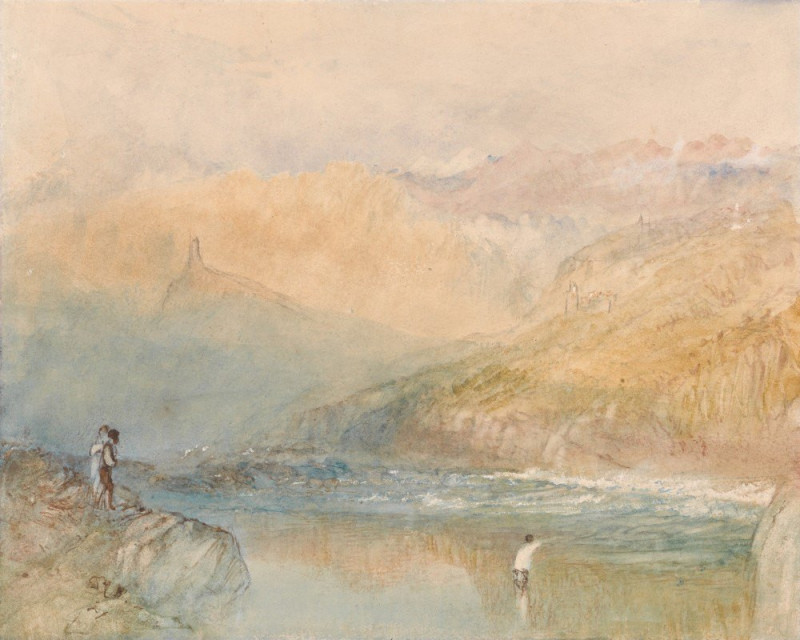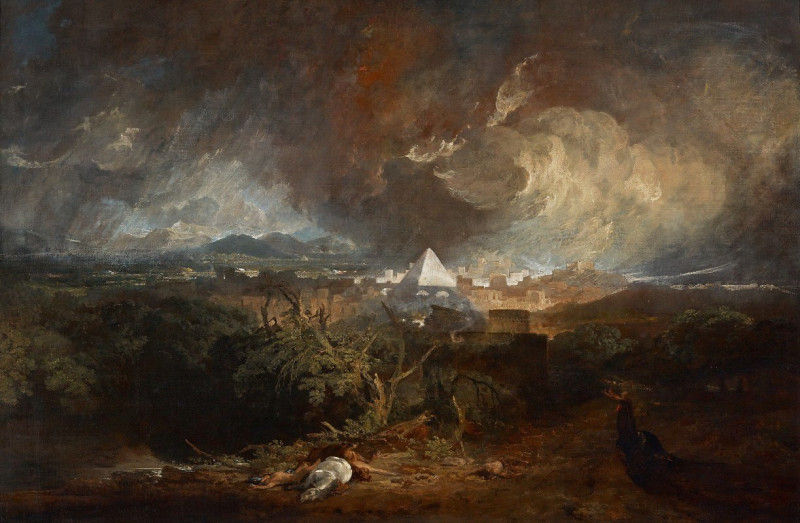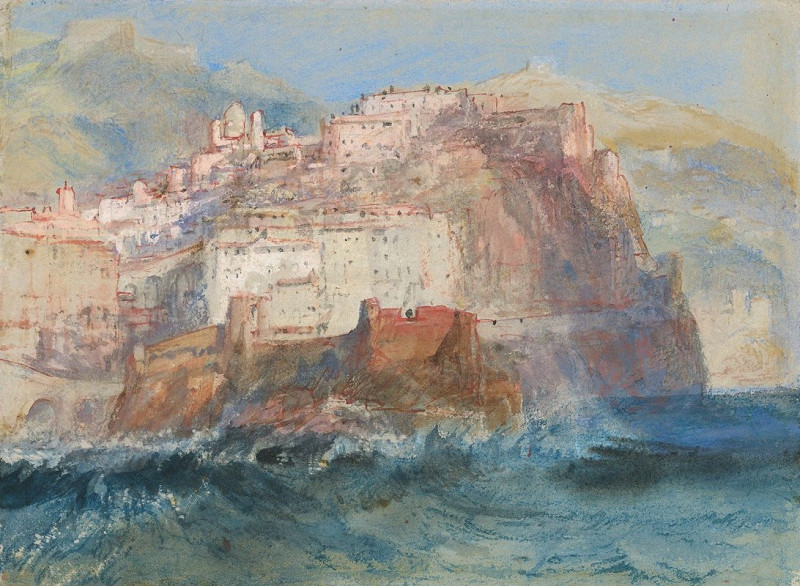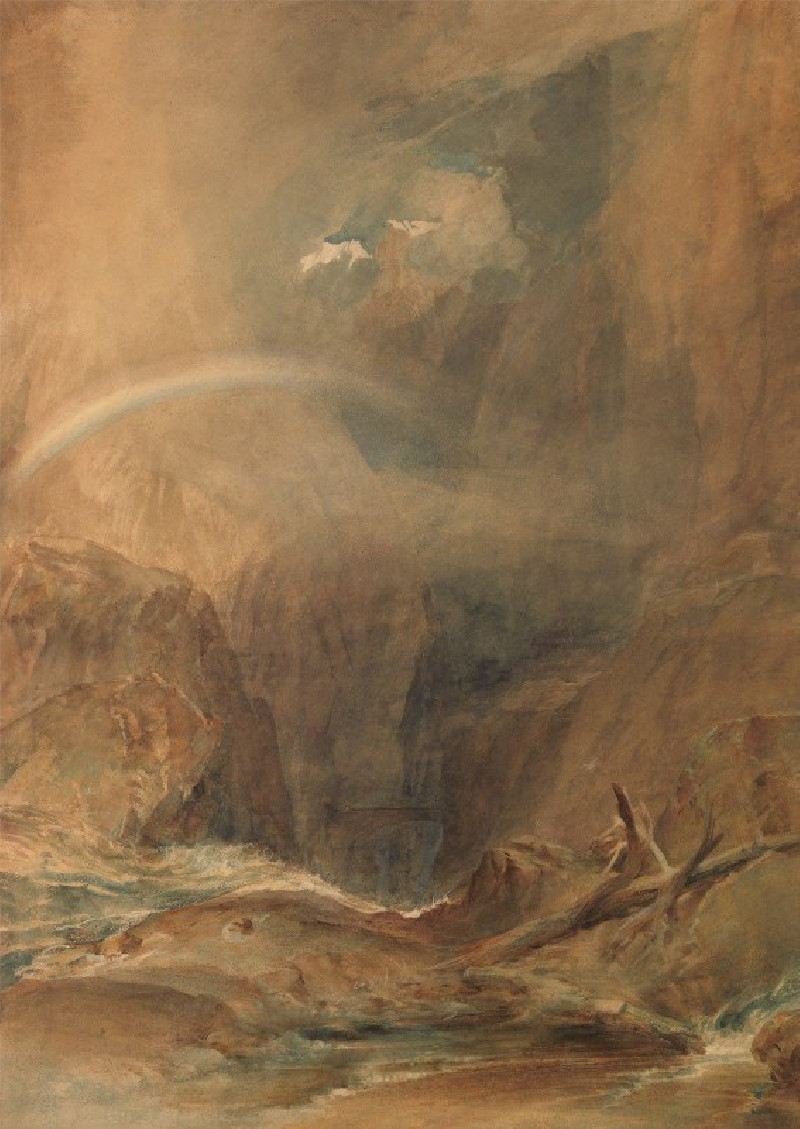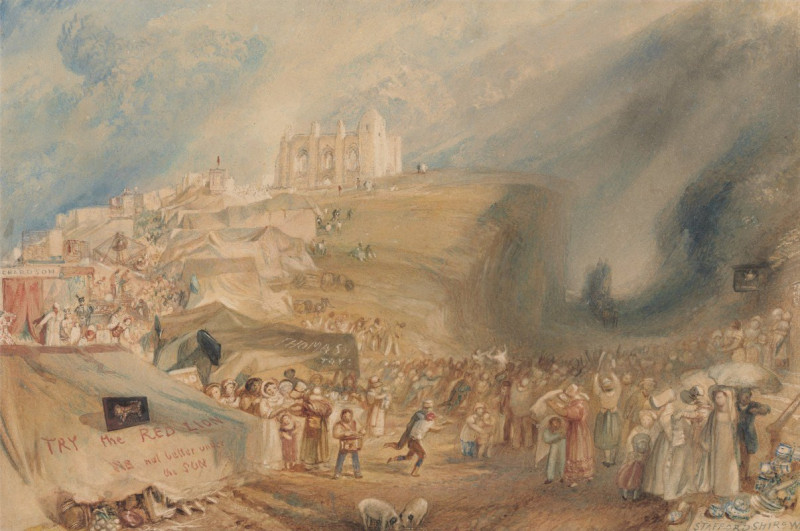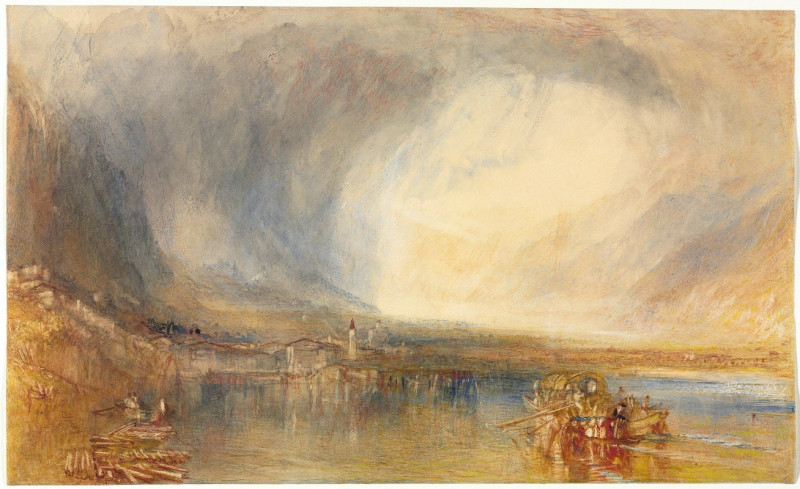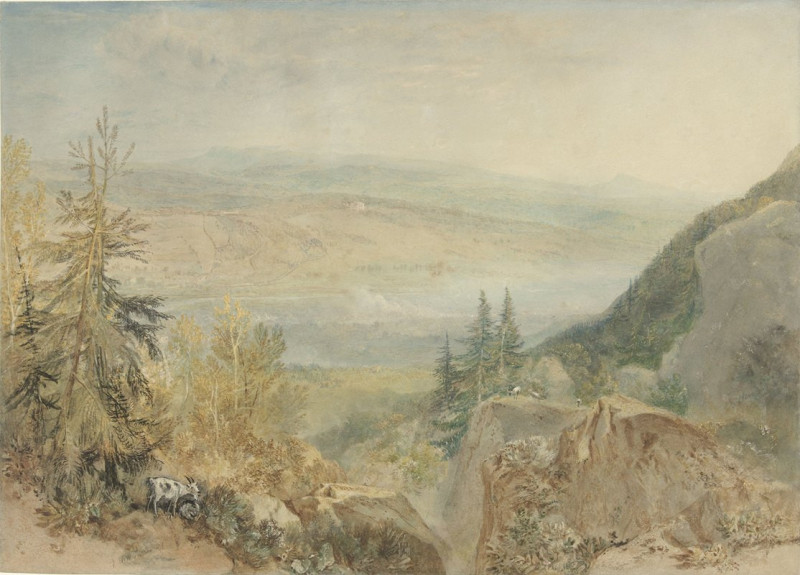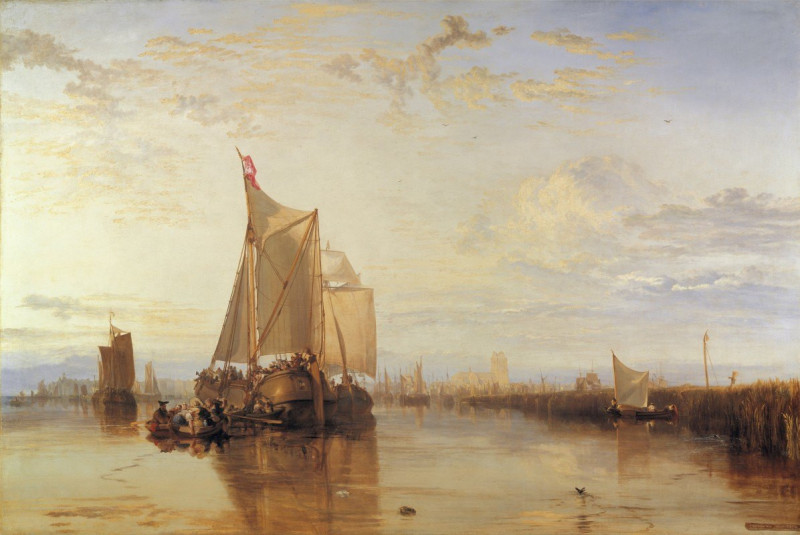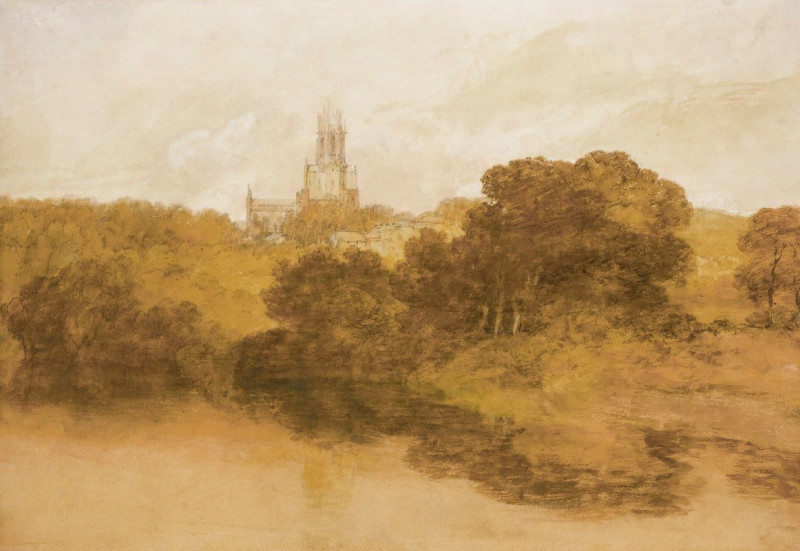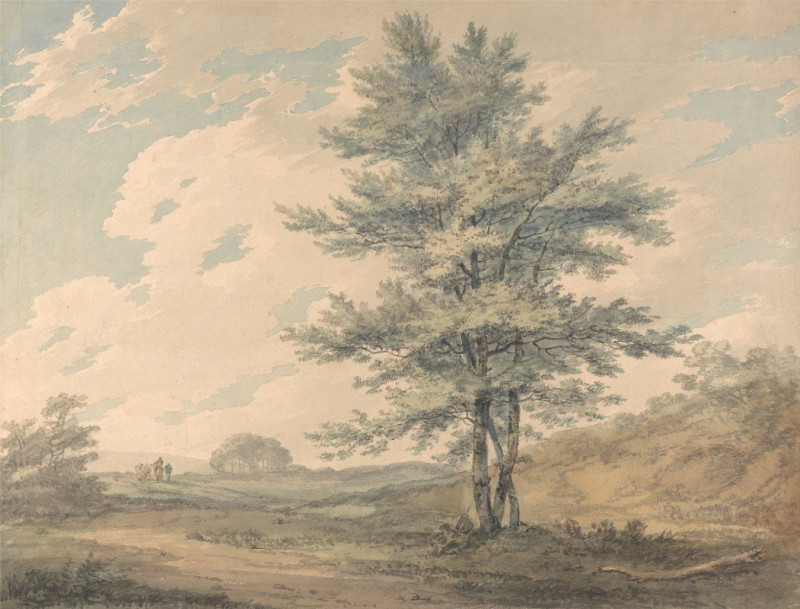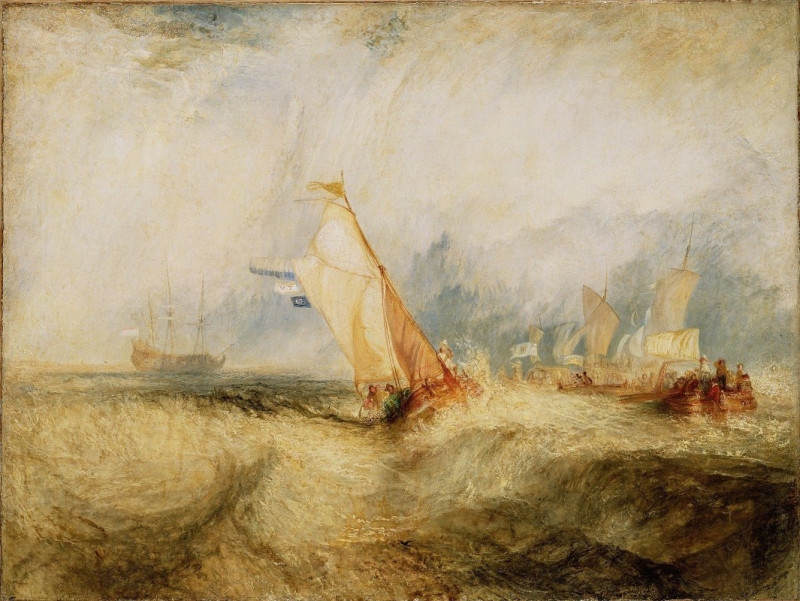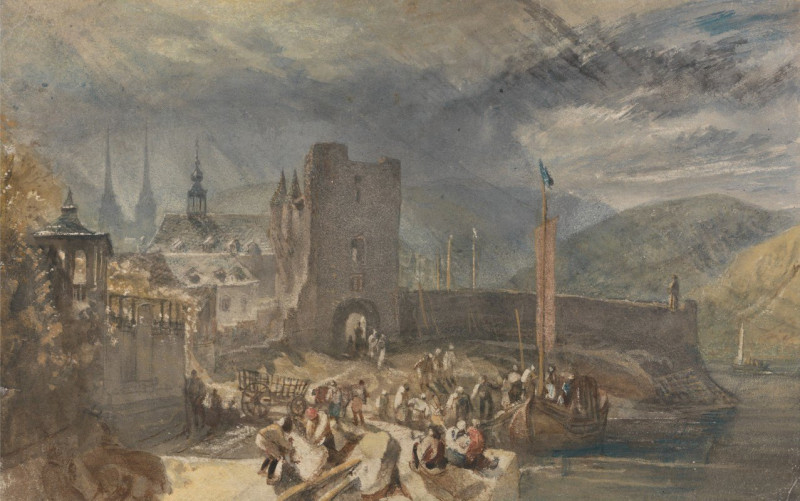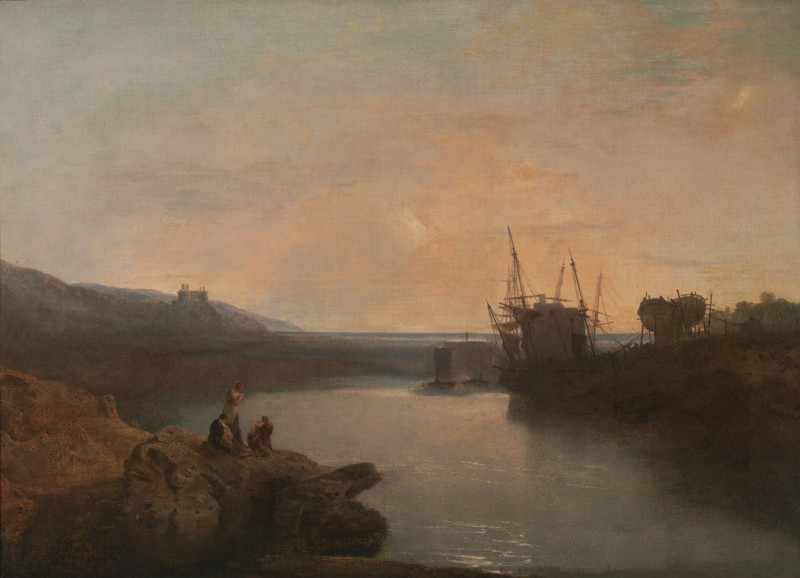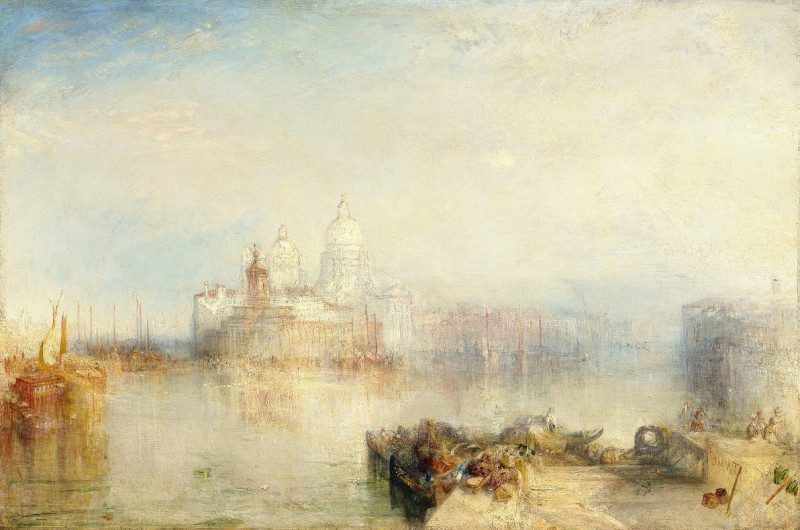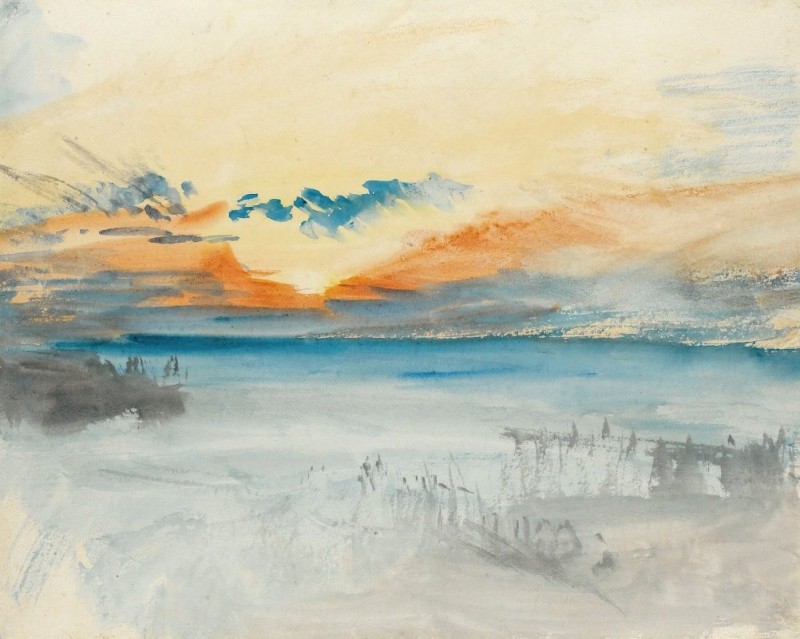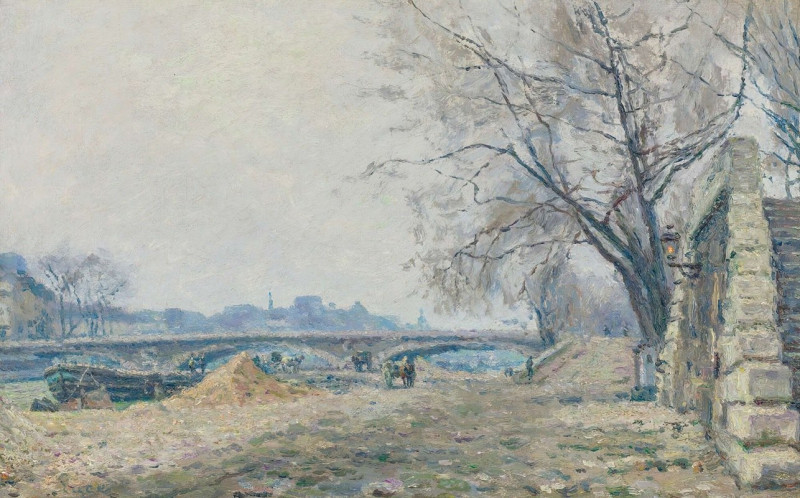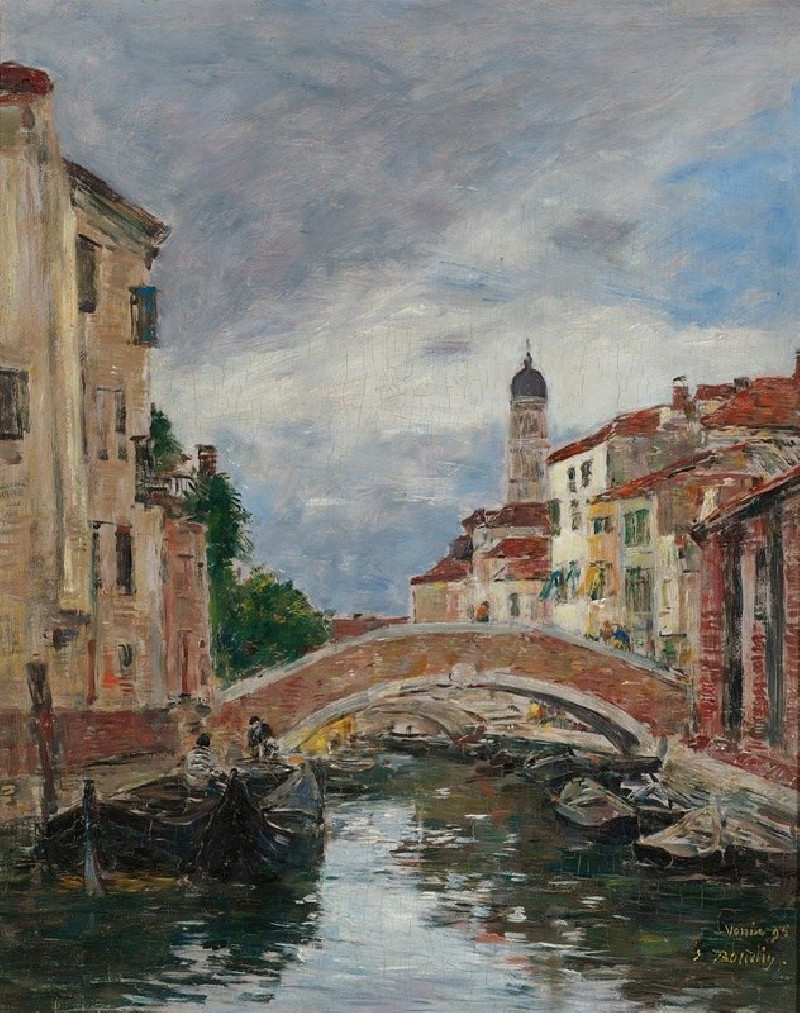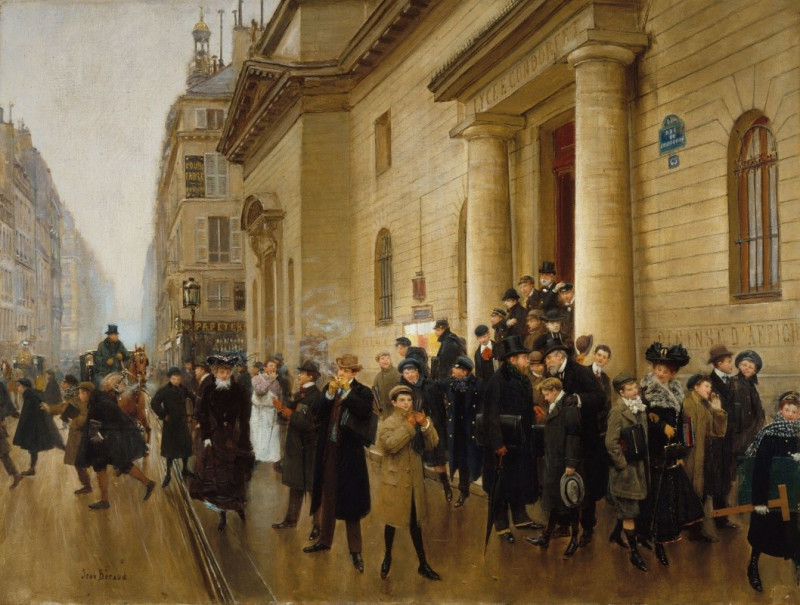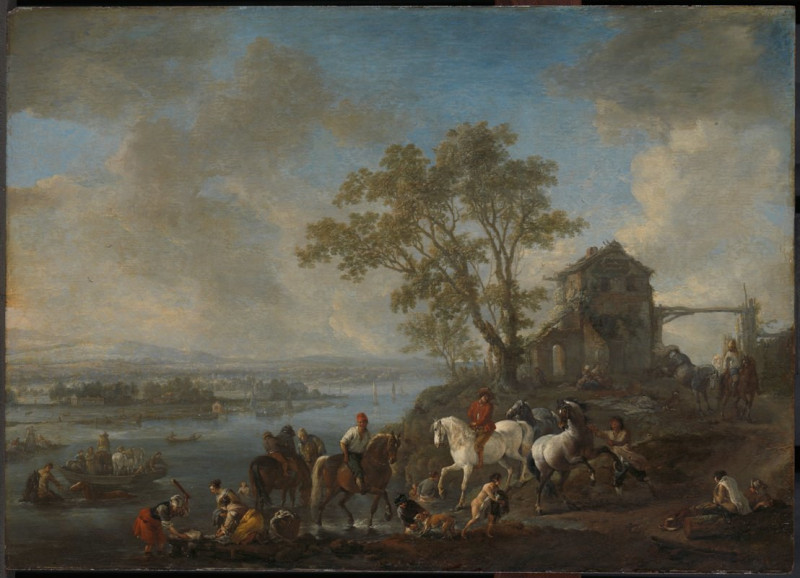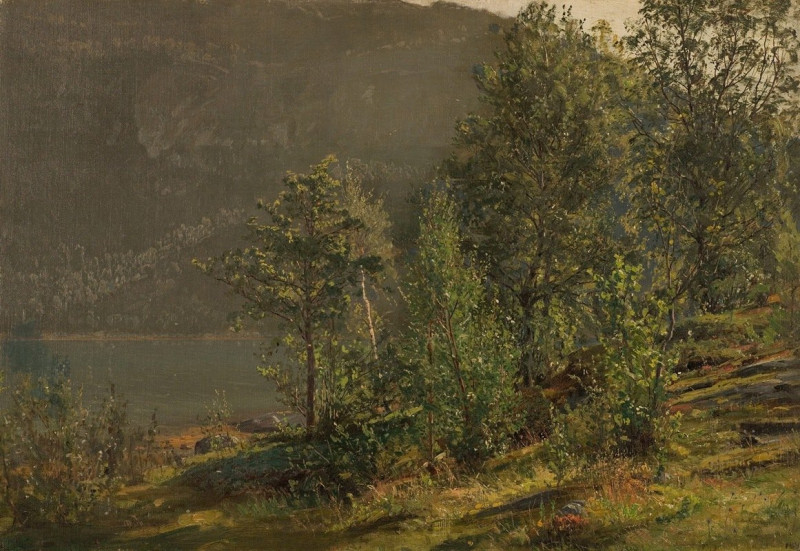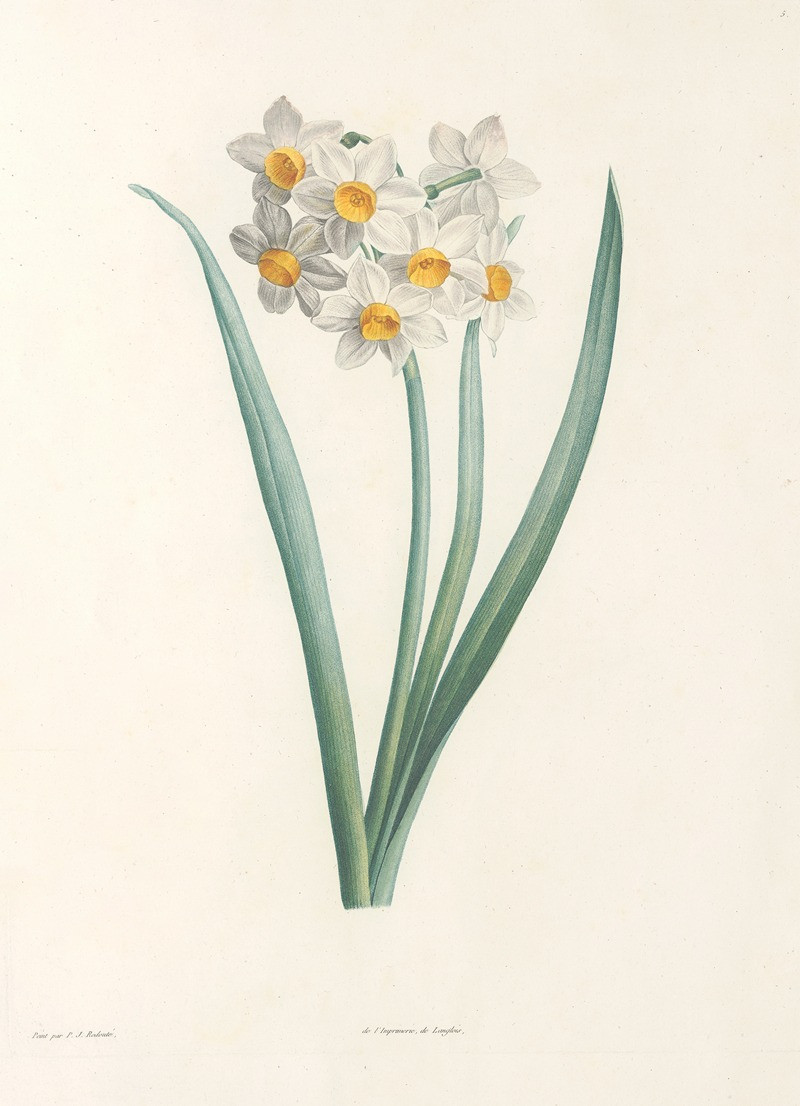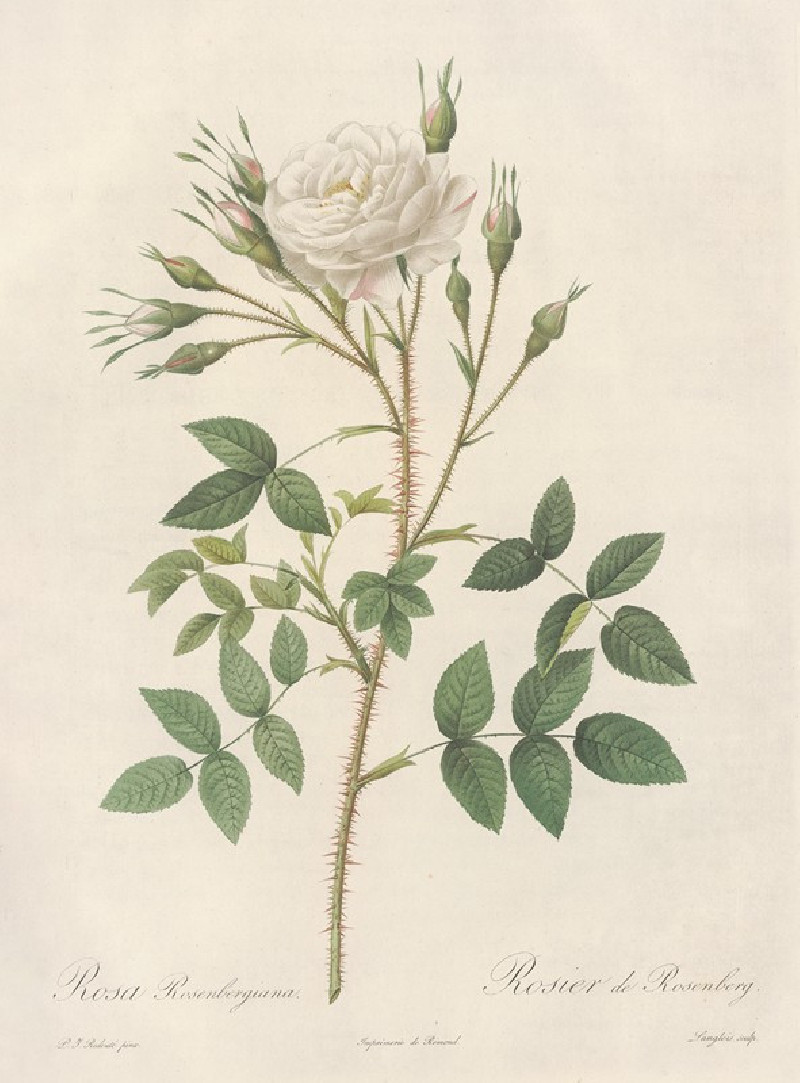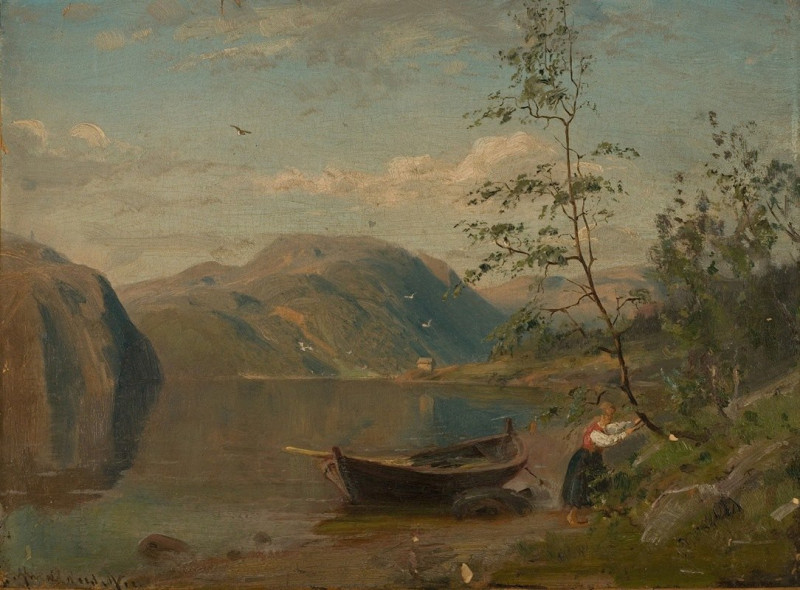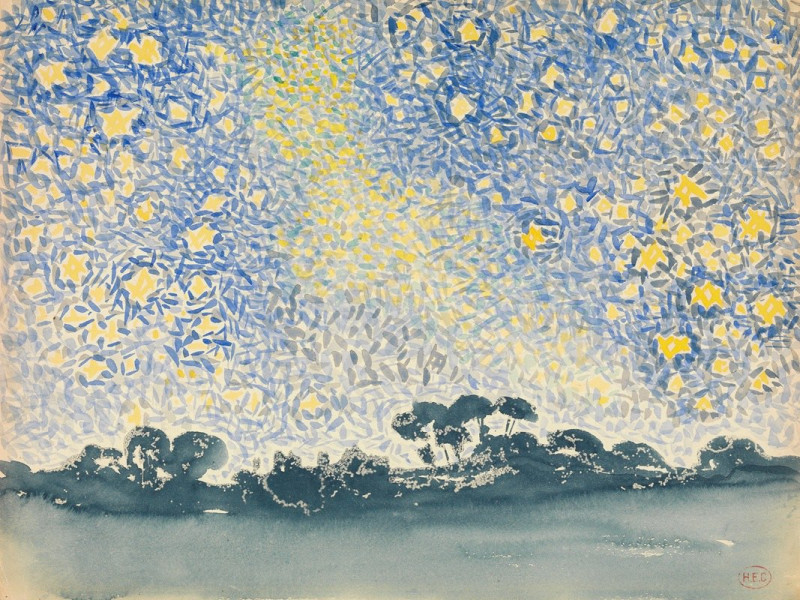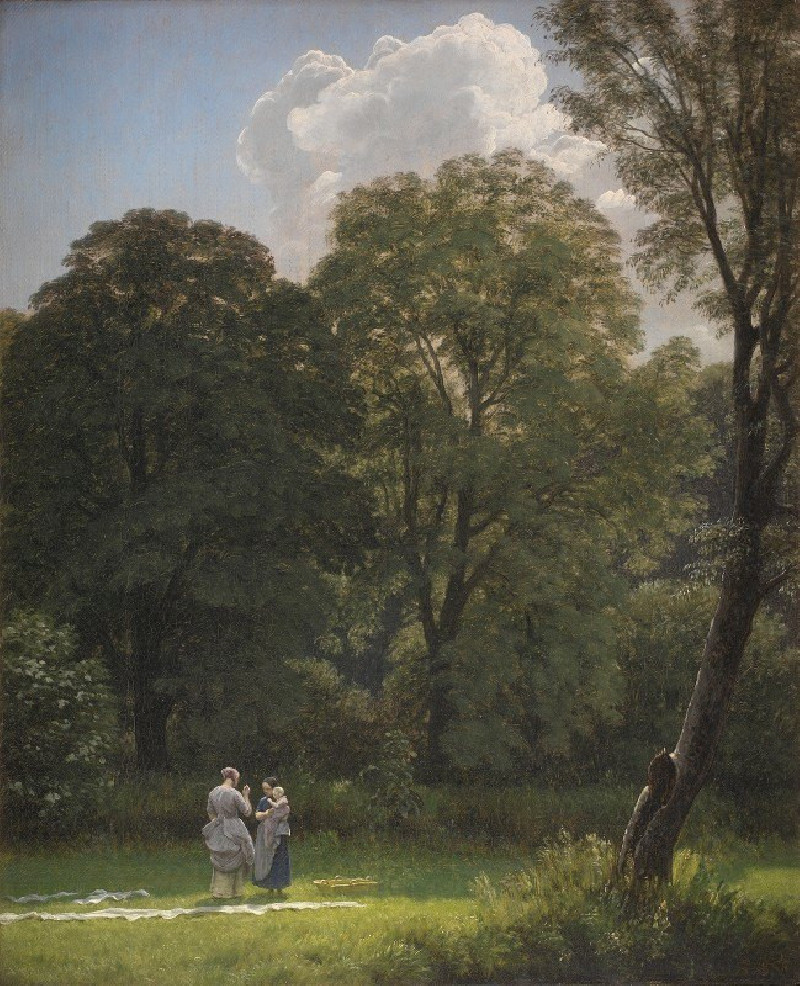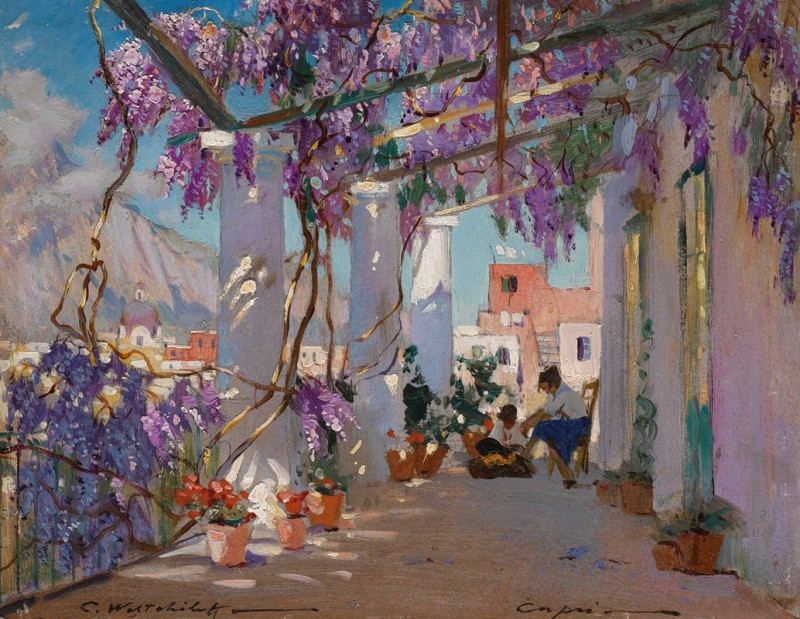Barnard Castle (ca. 1825)
Technique: Giclée quality print
Recommended by our customers
More about this artwork
"Barnard Castle" is a captivating painting by the distinguished British artist Joseph Mallord William Turner, dated around 1825. This artwork is an exemplary showcase of Turner's virtuosity in capturing light and atmosphere, embodying a tranquil yet poignant scene inspired by the picturesque ruins of Barnard Castle in County Durham, England.The painting offers a serene view of the Tees River, gently flowing through the landscape, reflecting the soft skies above and flanked by lush, autumn-colored vegetation. In the foreground, detailed and delicate brushstrokes depict the rugged beauty of the riverbank foliage, which partly obscures the view of a fisherman standing alone in the river, adding a human element to the natural scenery.Dominating the midground are the majestic ruins of Barnard Castle, placed atop a rocky hill, casting a watchful eye over the stone bridge that arches gracefully across the river. The castle's weathered stones and crumbling facade are illuminated by a subtle interplay of light, lending an air of historical grandeur and timeless allure to the scene.The soft, diffused light suggests either early morning or late afternoon, enhancing the enchanting and dreamlike mood of the painting. Turner's use of warm, golden hues and the bluish tint of the distant sky and mountains contribute to a feeling of depth and vastness."Barnard Castle" by J.M.W. Turner is not just a visual representation but a poetic interpretation of nature's enduring beauty and the quiet dignity of historical ruins. It invites viewers to ponder the passage of time and the stories embedded within these aged stones, all while losing themselves in the ethereal quality of Turner’s artistic vision.
Delivery
Returns
Joseph Mallord William Turner RA, known in his time as William Turner, was an English Romantic painter, printmaker and watercolourist. He is known for his expressive colourisations, imaginative landscapes and turbulent, often violent marine paintings. He left behind more than 550 oil paintings, 2,000 watercolours, and 30,000 works on paper. He was championed by the leading English art critic John Ruskin from 1840, and is today regarded as having elevated landscape painting to an eminence rivalling history painting.


